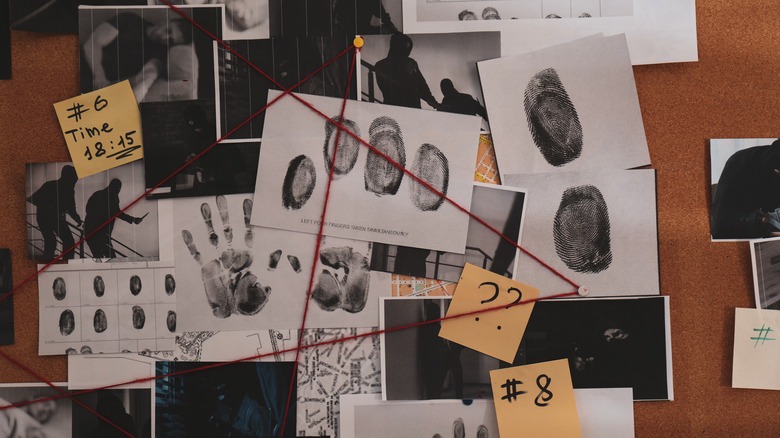What Happens During A Psychological Autopsy?
An autopsy is done post-mortem to determine the extent of a disease or the cause of death of an individual. The most common reasons for requiring an autopsy include an unexpected death, death under suspicious circumstances, or an outbreak of illness with no definite cause (via Hopkins Medicine). The procedure starts with a visual inspection of the body, followed by an examination of the organs as well as tissues and fluids. However, there's also a procedure called a psychological autopsy that is typically done when a person dies by suicide or under ambiguous circumstances.
In an interview with A&E Real Crime, forensic psychology professor Dr. Katherine Ramsland stated that the main objective of a psychological autopsy is to determine the mental state of the deceased before death in order to indicate whether they could have died by suicide. There have been instances where suicides were staged to cover up a homicide, and in cases like those, physical evidence may not be enough to rightfully determine the real cause of death. A psychological assessment of the deceased can then offer more insights regarding the real cause of death.
When is a psychological autopsy needed?
According to Expert Psychological Evaluations, autopsies are done on 5% to 20% of deaths, as the cause of death isn't clear. That percentage includes those who die of mysterious circumstances, suspected suicides, and even drug overdoses and are called "equivocal deaths," which means they are open to interpretation.
Dr. Katherine Ramsland stated 75% of people who die by suicide give signals — intentionally or unintentionally — about what they plan to do (via A&E Real Crime). Some of the signs include depression, hopelessness, mood swings, or even the obvious, such as writing a suicide letter. Some of the cases that may need a psychological autopsy performed include criminal cases, cases where insurance claims are involved, contested last wills and testaments, product liability cases, or worker's compensation cases. By getting more information about the deceased and the circumstances surrounding the death, mental health workers can paint a better picture of the cause of death.
The process of a psychological autopsy
The goal of a psychological autopsy is to determine what happened to the deceased in the time leading up to their death. Since the dead cannot speak, all information about the deceased is gathered through thorough research. This includes basic information, the details surrounding the death, history of medical or mental illnesses, lifestyle, and patterns of behavior (via Expert Psychological Evaluations). Furthermore, people who are associated with the deceased are interviewed — called collateral interviews — in order to have a clearer understanding of the psychological state of the deceased before death. The information gathered includes risk factors, intent, and possible precipitating events that may have contributed to the death.
However, unlike a physical autopsy, a psychological autopsy is not an exact science. Protocols must be followed to avoid violating privacy rights and ensuring the investigation is done ethically. Furthermore, the process has its limitations. According to Dr. Katherine Ramsland, some friends and close family members refuse to talk about the deceased, or in some cases, they don't have information that would help determine the deceased's state of mind before their passing, as noted by A&E Real Crime. Therefore, the result of a psychological autopsy is only as helpful as the quality of information gathered.


